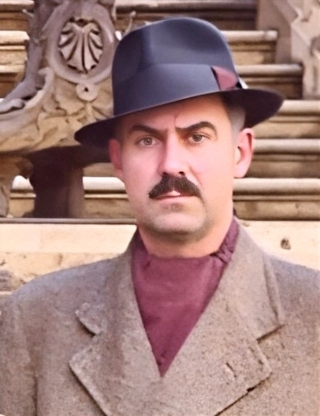Ernst Alfons Franz Ignaz Joseph Maria Anton Fürst von Hohenberg

Personalia
Born:
Died:
Profession:
Persecution:
Imprisonment 16.3.1938 - 20.3.1938,
Dachau concentration camp 21.3.1938 - 20.9.1939,
Flossenbürg concentration camp 21.9.1939 - 22.3.1940,
Sachsenhausen concentration camp 23.3.1940 - 12.4.1943
Memberships
Curriculum Vitae
Ernst Alfons Franz Ignaz Joseph Maria Anton Fürst von Hohenberg is the second son of four children of Archduke Franz Ferdinand of Austria-Este, heir to the Austrian throne, and his wife Countess Sophie Chotek, Duchess of Hohenberg. Due to the morganatic marriage of his parents, he and his siblings are excluded from the succession to the throne.
After the assassination attempt on his parents in 1914, he and his siblings are placed in the care of his maternal aunt, Henriette Countess Chotek. The orphaned children are only received once by Emperor Franz Joseph I. The three children inherit Artstetten Castle in Lower Austria, Konopiště Castle south of Prague, Chlumetz Castle in South Bohemia and Greifenberg Castle in Radmer in Styria. After the death of Emperor Franz Joseph I in 1916, 20,000 hectares of forest property in Radmer, Styria, which were actually intended as a testamentary inheritance for Franz Ferdinand, were transferred from his estate to his orphans Maximilian Duke of Hohenberg, Sophie Princess of Hohenberg and Ernst Prince of Hohenberg.
During the reign of Emperor Charles I, on August 31, 1917, the children of the heirs to the throne received a hereditary coat of arms and the hereditary title of duke with the title Hoheit, while the other descendants received the title Fürst or Fürstin with the title Durchlaucht. While his brother Maximilian was given the title of first-born Duke, Sophie and Ernst were given the titles of Prince and Princess respectively.
After the fall of Austria-Hungary and the expulsion of the imperial family from Austria, Ernst Prince of Hohenberg studied forestry in Bruck an der Mur. Together with his brother, he became involved in legitimist organizations in the 1930s and joined the Austrian Heimatschutz. He spoke at rallies against National Socialism and vehemently supported Austria's independence. He was also in close contact with the son of the last emperor of Austria, Otto von Habsburg-Lothringen, who was one of the spearheads against National Socialism. He is also active in the legitimist umbrella organization Eiserner Ring. In 1936, he married Maria Therese Wood in Vienna. This marriage produced two children.
On March 12, 1938, Ernst Prince of Hohenberg witnessed the demise of free and independent Austria with the invasion of the German Wehrmacht. He was arrested by the Gestapo on March 16, 1938 and deported to Dachau concentration camp on March 21, 1938. The deportation to Dachau concentration camp took place before the first mass transport from occupied Austria, the so-called 'Prominententransport' on April 1, 1938. The Hohenberg family's property is confiscated by the National Socialists. After the invasion of Poland and the associated outbreak of World War II, the Dachau concentration camp had to be evacuated for the SS at short notice and Ernst Fürst von Hohenberg was transferred to the Flossenbürg concentration camp on September 20, 1938. On March 23, 1940, he was transferred from Flossenbürg concentration camp to Sachsenhausen concentration camp. He was released from this concentration camp on April 12, 1943.
After the liberation of Austria in May 1945 and the re-establishment of the Republic, the Hohenberg family received restitution for their estates expropriated by the National Socialists. Ernst Prince of Hohenberg becomes a forester again and joins the Austrian People's Party (ÖVP) and the ÖVP Comradeship of the Politically Persecuted and Confessors for Austria. However, the abuse in the concentration camps weakened him physically to such an extent that he died in Graz at the age of 49. He finds his final resting place in the Hohenberg family crypt in Artstetten Castle.
Places
Residence:
Persecution:
Honoring:
Citations
Wikipedia unter de.wikipedia.org/wiki/Ernst_Hohenberg
Archiv der ÖVP-Kameradschaft der politisch Verfolgten und Bekenner für Österreich (KPV)
Franz Fürst von Hohenberg, Privat
